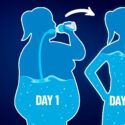You’re halfway through your flight when you start feeling nauseous. You don’t usually get airsick. But today you’re feeling terrible. What could’ve caused this? You only took some water with ice. A single plane can transport thousands of people in just one day. Depending on the airline, flight attendants might only have about 15 minutes to prepare a plane for the next flight. This is not enough to properly clean and disinfect every part of the aircraft. And some areas might not get the attention to detail they should. Today we’ll show you which of them can accumulate the most pathogens and what you can do to avoid a potential health crisis.
Step 1. Don’t wear shorts
Wear pants and a long sleeve shirt. You’ll want to avoid contact with the seat as much as possible. They usually don’t get cleaned between flights, and there may be a variety of different substances and fluids spilled on them. Skip the spicy foods and sodas before flying. Gases in your stomach will expand at high altitudes. This can cause discomfort and frequent visits to the washroom, which is a bad idea. But more on that later. Bring hand sanitizer and disinfectant wipes. You’re gonna need them.
Step 2. Don’t touch anything
Avoid touching the seat tops. The hundreds of passengers who just got off the plane have probably touched them already. Get your disinfectant wipes ready. When you get to your seat, it’s showtime. Start by cleaning the headrest. You don’t know how dirty or full of dandruff the hair of the previous person sitting there was. Wipe the armrest too. Everyone has touched them and kids have likely put their feet over them. Forget about the magazines in the seat pocket. Some people like to lick their fingers before turning a page. And don’t lean against any windows or walls. Mouth-breathers and snorers likely spread lots of saliva all over them on the last flight.
Step 3. Keep your shoes on
You have a higher risk of developing deep vein thrombosis during a flight. Prevent it by getting up, stretching and walking around for a little while. Make sure you don’t walk around with only socks on or barefoot. People could’ve dropped food or thrown up on the floor. Besides, who would want to look at someone’s dried-out feet mid-flight?
Step 4. Beware of the tray
This is one of the dirtiest parts of a plane. It could be highly contaminated by pathogens that can cause infections, including staph and E. coli. People might have used it for changing a baby, cleaning their nails or as a footrest. Use sanitizing wipes to give the tray a good scrubbing before eating on it. And throw away any food that comes in contact with it. It might also be a good idea to lay down a napkin or a tissue before mealtime. Just to be safe.
Step 5. No ice, please
A 2004 study on the water supplies of 327 aircraft by the U.S. Environmental Protection Agency found that only 15% could actually pass health standards. Since then, many airlines offer bottled water, but the ice is likely made with the water from the onboard tanks. Avoid any drinks that still use tap water, like coffee or tea. And skip the ice in that cocktail you’re planning on.
Step 6. Bathroom etiquette
You’ll have to touch the washroom doorknob to do your business, so make sure to immediately wash your hands afterward or wrap your fingers in a wipe beforehand. Sometimes turbulence can throw people off and ruin their aim with bodily fluids, so inspect your surroundings before making direct contact with anything. Use your wipes or toilet paper when interacting with the sink, toilet and the flush button. Wash your hands thoroughly, dry them with a paper towel and use it to unlock the door. You should avoid touching your face during the whole flight, especially if you’ve used the bathroom. Flying doesn’t have to be a traumatic experience. If you stay vigilant and regularly disinfect your surroundings, you should reach your destination with no germs using you as their own plane.
Sources
- These Are the Disgusting Spots You Should Never Touch on a Plane. Yuko, E. (2020). Best Life.
- 18 things you should never do on an airplane. LaBianca, J. and Kendall, T. (2018). Business Insider.
- You Should Never Ask For Ice on an Airplane—And More Air Travel Food Tips. Williams, C. (2019). My Recipes.
- The One Thing You Should Never Do On An Airplane. Ashraf, S. (2018). Explore.
- What’s the dirtiest surface on an airplane? The result may surprise you. Agro, C., Cowley, J., Pedersen, K., Vellani, N. (2018). CBC.

















